
Overland Tech and Travel
Advice from the world's
most experienced overlanders
tests, reviews, opinion, and more
The JATAC: A self-contained, solar-powered expedition vehicle
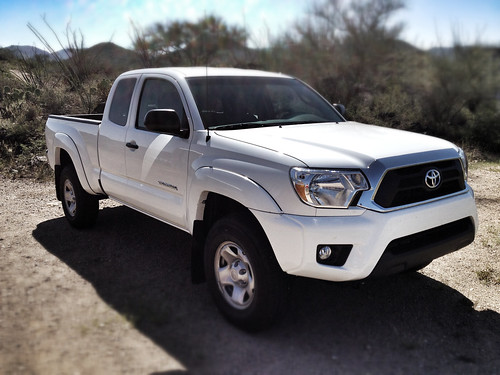 It's just a Tacoma—affordable, capable, reliable.There’s absolutely nothing exotic about our new Toyota Tacoma and Four Wheel Camper—that’s exactly why we chose the combination.
It's just a Tacoma—affordable, capable, reliable.There’s absolutely nothing exotic about our new Toyota Tacoma and Four Wheel Camper—that’s exactly why we chose the combination.
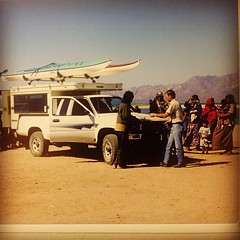 Our 1993 FWC Eagle and Toyota truck in Mexico.Our first Tacoma/FWC proved to be very nearly our ideal traveling arrangement, combining a capable, comfortable, and reliable truck with a compact home-away-from-home camper that deployed in 60 seconds, subtracted almost nothing from the off-pavement ability of the Tacoma, and provided everything we needed for long journeys away from civilization.
Our 1993 FWC Eagle and Toyota truck in Mexico.Our first Tacoma/FWC proved to be very nearly our ideal traveling arrangement, combining a capable, comfortable, and reliable truck with a compact home-away-from-home camper that deployed in 60 seconds, subtracted almost nothing from the off-pavement ability of the Tacoma, and provided everything we needed for long journeys away from civilization.
As I said to Roseann, the new combination is familiar, but feels like our old rig had won a spot on Xtreme Truck and Camper Makeover. The 2012 Tacoma is bigger and more powerful than the 2000 model, yet looks on track to deliver equivalent fuel economy, thanks to modern computer engineering. The camper is larger as well, and has been upgraded extensively since our 1993 version. Pressure water (totalling 26 gallons including the, heh, water heater), a cunning interior shower arrangement, a vastly more efficient compressor-driven fridge, and a front-mounted dinette that leaves the entire galley free for the cook are just a few benefits. It retains the gargantuo bed, sink, two-burner stove, and a tucked-away porta-potti for occasional use in crowded campsites or villages.
However, our needs and plans have evolved somewhat in the last decade, so we have several projects in mind or in process to suit our requirements:
- Since we work in electronic media now (laptop computers, cameras, video), we wanted an electrical system that would be essentially self-sufficient, able to handle the demands of the fridge and lights in the camper, power the laptops with 120-volt AC, and also do recharging duty for the cameras.
- Since we often travel as a solo vehicle, we wanted a truck that was not only capable in four-wheel-drive terrain, but completely self-sufficient in terms of recovery equipment and accessories.
- Lastly, we frequently combine camping with work, which can mean meetings in cities. We expect to be able to present ourselves properly—dressed well and not trailing an odor like, well, people who’ve been camping for a week.
 Just a Tacoma . . . and a camper. Newly installed Fleet at Four Wheel Campers.The solution to the first challenge will involve designing and installing a comprehensive solar-power system, a suitable battery bank and charge controller, and a reliable inverter to provide 120V AC when needed. It also entails ensuring the electrical systems in the camper (lights, etc.) are as efficient as possible.
Just a Tacoma . . . and a camper. Newly installed Fleet at Four Wheel Campers.The solution to the first challenge will involve designing and installing a comprehensive solar-power system, a suitable battery bank and charge controller, and a reliable inverter to provide 120V AC when needed. It also entails ensuring the electrical systems in the camper (lights, etc.) are as efficient as possible.
Addressing the second issue will include adding traction control in the form of a rear locker, ensuring the suspension retains compliance while carrying the extra load properly, and adding a winch and recovery points, along with the tools and accessories needed to augment the winch and allow for such needs as tire repair.
The third issue has been resolved—the shower and hot water system are brilliant for such a small unit.
We will be debuting the JATAC at Overland Expo 2013, and in the meantime I'll be posting updates on the modest modifications we have planned, including suspension from BOSS and ICON, new tires, front and rear bumpers, and mounting points for Hi-Lift and other tools.
[Special thanks goes to project co-sponsors Findlay Toyota of Flagstaff and Four Wheel Campers; we will be naming other sponsors as they join our project.]
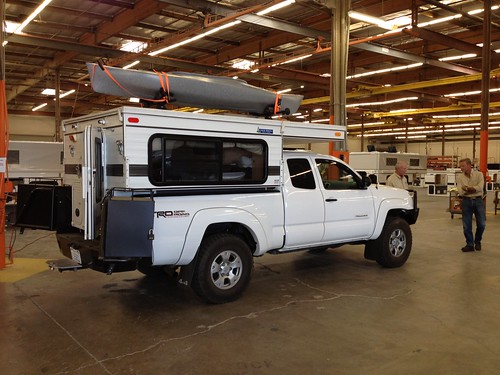 The inspiration for the new project: Tom Hanagan's 2012 Tacoma and earlier Fleet model. Ours has a newer configuration.
The inspiration for the new project: Tom Hanagan's 2012 Tacoma and earlier Fleet model. Ours has a newer configuration.
THAT coffee . . .
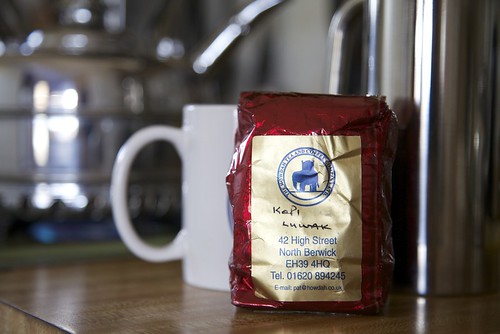
I can claim with unimpeachable documentation to have been a fan of good coffee since before Starbucks made it out of Seattle: On our first Christmas together in 1984, as penurious college students, Roseann’s gift to me was a tin of Langford Brothers Jamaica Blue Mountain beans. It was exquisite stuff, and the tin still serves as my pen holder.
Since then I’ve maintained a taste for a high-quality morning cup, while scorning what I see as the silly end of the coffee connoisseur world. I don’t need to know the name of the guy who picked the beans, and I don’t own a multi-story glass laboratory apparatus to brew them. I buy freshly roasted beans from fair-trade sources, grind them the day I use them if it’s possible and don’t worry about it if it’s not, and then employ a simple Melitta filter holder and a (gasp) paper filter to brew one cup at a time. It works as well while traveling as at home.
And one of the joys of travel is sampling coffee from different regions. Since we spend a lot of time in East Africa, where coffee originated, there are endless opportunities to explore. The local Kenyan coffee chain, Dorman’s, has been around 20 years longer than Starbucks and utterly demolishes them in terms of quality. A couple of years ago while exploring southwestern Tanzania we stumbled across the oldest operating coffee plantation in the country, had a cup of just about the freshest coffee it’s possible to obtain, and took home several kilos of Tanzanian Peaberry for friends. And Roseann, dammit, has experienced the full-on Ethiopian coffee ritual in Addis Ababa, about as close as one can get to where the mythical herd boy first noticed his goats gamboling after chewing the berries of a certain shrub, and decided to try them himself.
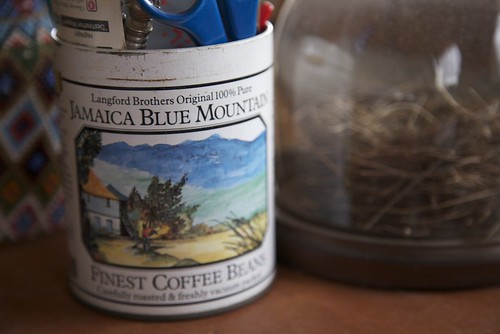 However, I recently had by a significant margin my most exotic coffee experience, and its genesis was about as far from coffee-growing country as it’s possible to get: North Berwick, Scotland, just down the Firth of Forth from Edinburgh.
However, I recently had by a significant margin my most exotic coffee experience, and its genesis was about as far from coffee-growing country as it’s possible to get: North Berwick, Scotland, just down the Firth of Forth from Edinburgh.
We were staying with our friend Duncan Barbour, ex-Camel-Trophy manager for the British teams and four-wheel-drive trainer extraordinaire. (His house is a gallery of framed photographs and articles from the Camel Trophy and other events, and letters from various celebrities, including one from Uma Thurman positively gushing about what a wonderful time she had when he taught her how to handle a stick shift. I’ll leave that one alone.)
As Duncan was still in Morocco when we arrived, we took the opportunity to explore the beautiful little seaside old town of Berwick—and there stumbled across a magical little store, the Howdah Tea and Coffee Co. Ltd. Inside was cramped, dimly lit, and redolent of the mix of teas and coffees stacked on shelves. It was easy to convince yourself that the inventory was still delivered by three-masted clippers anchoring in the bay outside after a downwind run around Cape Horn.
Roseann bought some aromatic tea blends, but as we were headed to Kenya and Dorman’s I resisted the redundancy of buying East African coffee. When Duncan returned home we mentioned the store, and he assured us he knew the owner, Pat, well and frequented the place. Then he looked at me with a twinkle in his eye and said, “That reminds me—I have a wee something for you.” He went into the kitchen and came back with a little 125-gram foil bag of ground coffee. I looked at the Howdah label, on which was hand-written: Kopi Luwak.
Okay. If you’re not familiar with it, Kopi Luwak coffee hit the news a few years ago as “the world’s most expensive coffee” (as though that in itself were somehow reason to buy it). More to the point was the source of the beans. An adorable little Indonesian mammal of the Viverridae family, called the Asian palm civet (Paradoxurus hermaphroditus), has an appetite for ripe coffee berries (specifically the pulpy red pericarp surrounding the bean). Once the civet has digested the fruit, the bean passes through its gut and is defecated undamaged.
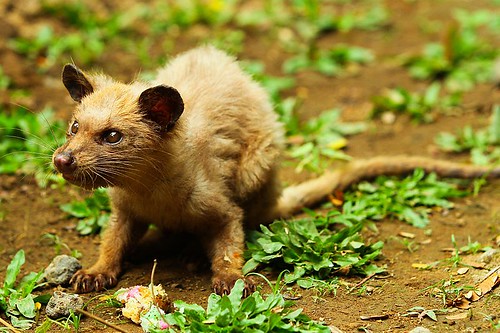 Paradoxurus hermaphroditus (courtesy Wikipedia) But not, apparently, unchanged. Proteolytic enzymes in the digestive system permeate the beans, reportedly increasing free amino acids and creating shorter peptides. What this means is that, if you locate and wash those defecated berries and roast them, the result is a coffee exceptionally free of bitterness—and, obviously, a coffee exceptionally, er, exclusive.
Paradoxurus hermaphroditus (courtesy Wikipedia) But not, apparently, unchanged. Proteolytic enzymes in the digestive system permeate the beans, reportedly increasing free amino acids and creating shorter peptides. What this means is that, if you locate and wash those defecated berries and roast them, the result is a coffee exceptionally free of bitterness—and, obviously, a coffee exceptionally, er, exclusive.
I remember reading about Kopi Luwak for the first time and thinking, Oh. My. God. This, I was instantly convinced, represented the absolute nadir of the lunacy that gripped those pathetic yuppie coffee snobs who had done their best to spoil what had been an enjoyable pastime: brewing and drinking decent coffee. The perverse one-upmanship represented by this “world’s most expensive coffee” put in the shade—so to speak—any previous obsessions like estate-specific beans or the latest $3,000 Miele brewing system.
And here I was holding a bag of it.
Duncan grinned as though he was reading my mind. Couldn’t he just have given me a bottle of Balvenie Double Cask and been done with it? Nope, not Dunc.
I tucked the little bag in my luggage, half-hoping a Kenyan customs official would stumble on it and tell me importing coffee was illegal. But it made it all the way through Kenya, back through England while we visited other friends, and back home.
All right—nothing for it but to try some. Refusing to treat the stuff differently than my usual choice of beans, I used my standard equipment to make a pretty strong cup (let’s see if that no-bitterness bit is real), poured it into a mug, and took a sip (while Roseann, who had snickeringly refused any, snickered).
If you’re expecting me to quip, “It tasted like sh*t,” you clearly underestimate my finesse with humor. It tasted . . . good. Excellent, in fact—medium-bodied, some nice complex caramelly undertones if you want me to get fancy. And there was definitely no trace of bitterness. Did angels sing? No. It was merely a damn good cup of coffee, right up there, I’d allow, with Kona or Ethiopian Harrar.
The real surprise came later, when I did some research into Kopi Luwak. It turns out the brew predates the coffee-snob movement by about two centuries—and has its origin in much more humble circumstances. It seems the Dutch built a thriving coffee-plantation empire in Java and Sumatra in the eighteenth century, and employed—to use the term generously—natives to tend the bushes and pick the ripe berries. Rather ungenerously, the Dutch decided that one way to maximize profits would be to prohibit the natives using any coffee for themselves. The caffeine-starved locals noticed the beans left in palm civet droppings, washed and roasted them, and were delighted to find the resulting brew better than what they’d been banned from drinking. The plantation owners inevitably heard about this phenomenon and got in on the back end (sorry). But the market for the unique coffee only got off the ground (sorry!) during the recent surge in the mania for high-end coffee products.
Now, controversy has arisen (doesn’t it always anytime anything proves profitable?), because some producers are raising captive civets to produce the beans, in countries where little government attention is paid to ensuring humane conditions. Hopefully this will result in a drive for “free-range civet coffee,” which would at least be one positive thing those snobs could do.
In the meantime, I’ve been ruminating over that profit angle. You see, we have grey foxes in abundance around our remote house in the Sonoran Desert. And grey foxes, which are omnivores and eat lots of seeds and such things, commonly return to the same place to defecate in obvious spots on top of rocks. Supposing I was to leave out a few piles of ripe coffee berries, then wait and . . .
Eh, maybe not.
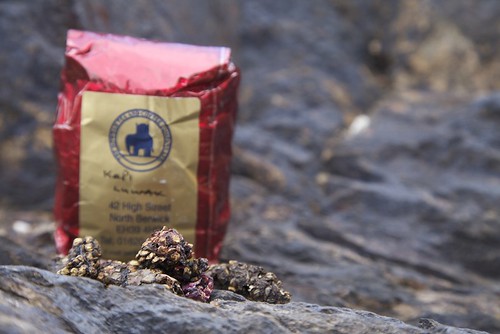 Civet coffee . . . why not Fox coffee?
Civet coffee . . . why not Fox coffee?
iPhone Lifeproof Case, part 2
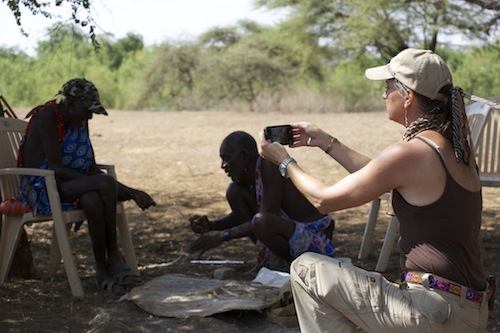 At work on a recent volunteer project in Maasailand.
At work on a recent volunteer project in Maasailand.
After using the Lifeproof Case for iPhone 4S for over a month of travels—from the cold, wet climes of England and Scotland, to the hot, dusty world of Kenya's South Rift Valley (see Part 1)—the jury is in: two thumbs-up.
The iPhone is an indispensible tool for our work: I use it increasingly for daily snapshots for our Flickr and social media feeds; it's my only GPS tool; the currency calculator and various language dictionaries are fantastic for travel; and oh yes, it's a global phone, too (Verizon Wireless in the U.S. will unlock your iPhone, and you can purchase local micro-SIMs in most major destinations; I just find the local Apple network dealer and head to the larger shops where I target the young, hip sales staff—in Kenya it took 15 minutes to buy and set up an iPhone SIM and have data and voice for a month for $20).
The Lifeproof Case is the best case I've used so far, including the Otterbox and a Sea to Summit soft case, which really isn't suited to daily use. Minor gripes are that you have to use the Apple power cord only (I prefer the retractable cords from Ziplink) and the dongle for the headphones jack is a bit of a pain and quite prone to disappearing into the maw of my rucksack. Major gripe is that you will probably have to test 2-3 to get one that fits right and doesn't have a wobbly, useless plastic cover on the front.
I didn't test the 3 meter drop height, but I did drop the phone a couple times onto the talc-like dirt of the Rift Valley floor and was very grateful for the dustproof membranes and glass protecting the speaker and lenses.
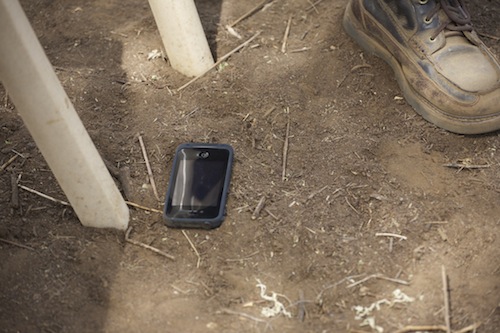 Oops. Dropping an expensive iPhone isn't so painful with the Lifeproof.
Oops. Dropping an expensive iPhone isn't so painful with the Lifeproof.
The Lifeproof Case is $80 but worth every penny to protect an expensive tool. Lifeproof.com
Forbidden Fruit: The Toyota Hilux

Sigh . . .
That’s always my first reaction when I start the three-liter, four-cylinder turbodiesel of a world-market Toyota Hilux pickup. Why, oh why, can’t we have this 27-mpg engine in our Tacomas in the U.S.? For that matter, why can’t we simply have the Hilux? Is our country not deserving of the fully ruggedized version of Toyota’s smaller pickup? The Hilux’s fully boxed chassis seems to sneer at the Tacoma, which makes do with open-channel frame sections under the bed. And that bed—it’s not just got a plastic liner, it is plastic, apparently squeezed from some giant tube rather than stamped and spot-welded as God intended a truck bed should be. One suspects Toyota engineers think the heaviest things Americans carry are flat-screen TVs or pallets of Costco toilet paper, while real working trucks in Africa don’t go anywhere without 15 Zulus in the back, or a pedestal-mounted .50-caliber BMG, or both.
The question is . . . could they be right?
I ruminated on the subject while carrying, not 15 Zulus, but 11 Maasai plus a fresh rolled-up cowhide down a murram road deep in the South Rift Valley. A murram (or laterite) road is a brilliant concept invented by . . . someone, and consists essentially of mixed clay and gravel over a bed of large sharp-edged stones. Unfortunately the gravel soon wears away, leaving just clay and sharp-edged stones. When dry it’s like driving on endless corrugations—except there’s no “magic” speed because there’s no symmetry to the ridges—and when wet it turns to grease, spitting piki-piki motorbikes and four-ton trucks into the ditch with equal facility. The only redeeming feature of this torturous base matrix is that it’s durable—like saying, “The food is terrible but the portions are huge.”
Where was I? Oh, right—as I looked out over the hood scoop of the Hilux (Tacomas get ghastly fake hood scoops; the Hilux gets a real one that feeds the intercooler), I pondered what other differences there were—as well as if and how much those differences really matter. The question is far from academic, since Roseann and I just bought a 2012 Tacoma and are about to mount a lightweight-but-still-800-pound-plus camper in its extruded bed.
 Hood scoop on the Hilux feeds the turbodiesel's intercooler.
Hood scoop on the Hilux feeds the turbodiesel's intercooler.
On an empirical basis there seems little to choose between the two trucks. Wheelbases and overall lengths overlap depending on cab and bed configuration. Width is exactly the same at 72.2 inches. Even curb weights aren’t all that different. But when you start comparing rated capacities, priorities become obvious. The U.S. Tacoma, with its powerful petrol V6, actually boasts the higher towing capacity (6,400 pounds) by almost 1,000 pounds—presumably reflecting the American fondness for powerboats, toy-haulers, etc. But payload—what the truck can actually carry in its bed and cab—is another story. The Tacoma’s highest available 1,415-pound capacity pales before the heaviest-duty Australian Hilux, which can tote over twice that. Even the wimpiest UK-spec Hilux is rated for 1,900 pounds. This is without doubt tied directly to that frame construction. The longest bed option on the Tacoma is 73 inches; on the Hilux it’s 91—over seven and a half feet.
Yet in other areas there’s less distinction. Toyota retained a solid front axle on its four-wheel-drive Hiluxes for several years after the U.S. truck got independent front suspension, thus generating the first of many howls of outrage from serious truck users in the U.S. regarding the pansification of our model. But now the Hilux is equipped with an independent double-A-arm/coil-spring front end identical to the Tacoma’s, so Toyota must be satisfied that IFS can hold up to developing-world abuse.
 Hilux on the left; Tacoma on the right. No more whining about solid axles on Hiluxes. The two share other components as well. They use the same sturdy semi-floating, 30-spline rear axle and an eight-inch differential with reinforced bearing caps and a strengthened pinion shaft. It’s strong enough to handle the 304 horsepower produced by the TRD-supercharged 4.0 petrol V6 without voiding Toyota’s warranty. Transmissions are also shared. I’ve heard there are minor differences in the transfer cases, but I wonder if it might be simply in the gearing (still checking on that one). Our hired Hilux had the same shift-on-the-fly electronic-disconnect front differential as our Tacoma.
Hilux on the left; Tacoma on the right. No more whining about solid axles on Hiluxes. The two share other components as well. They use the same sturdy semi-floating, 30-spline rear axle and an eight-inch differential with reinforced bearing caps and a strengthened pinion shaft. It’s strong enough to handle the 304 horsepower produced by the TRD-supercharged 4.0 petrol V6 without voiding Toyota’s warranty. Transmissions are also shared. I’ve heard there are minor differences in the transfer cases, but I wonder if it might be simply in the gearing (still checking on that one). Our hired Hilux had the same shift-on-the-fly electronic-disconnect front differential as our Tacoma.
One commonly held assumption is that the suspension on the Tacoma was optimized for ride comfort for us soft, fat Americans, while the Hilux concentrates on load-carrying prowess. Well . . . not necessarily. The ride on our own Tacoma—a V6 SR5 4x4 Access Cab with steel wheels and stock street tires we’ll soon change—is hilariously, maddeningly, absurdly stiff. It’s notably stiffer than the Old Man Emu leaf-spring setup on my FJ40. We’re looking forward to adding the camper and a winch and bumper just to knock some of the stuffing out of it. Meanwhile our hired Kenyan Hilux boasts a compliant, well-controlled ride whether empty or full of spear-toting Morani. What’s up with that? How can the truck rated to carry less weight ride worse than the “work” truck?
 The Kenyan Hilux at rest in the dusty Rift Valley.
The Kenyan Hilux at rest in the dusty Rift Valley.
Off-pavement ability is almost certainly a wash between the two, although the lack of compliance on our Tacoma definitely hurts it (we’ll be installing new shocks and an ARB rear locker soon, after the camper is on). We had the Hilux up in some of Kenya’s infamous black cotton soil for a few days. Approximately .005 millimeters of rain—it did nothing more than polka-dot the dust on the truck—was enough to turn the tracks into physics-defying surfaces utterly devoid of traction. Articulation, gearing, lockers, traction control—nothing really helps in that stuff. Proper mud tires will get you perhaps ten feet farther down the road than ordinary street tread. With that said, the Hilux’s turbodiesel responded gallantly to bursts of throttle when I had to surf through sections yawing thirty degrees one way and the other off the desired direction of travel. The Tacoma’s V6 would have been no handicap in the same situation (aside from drinking 40 percent more fuel).
What about lesser differences? Styling is a personal matter, and has scant impact on performance aside from details such as the approach angle. The Hilux—especially the reworked 2012 model—is notably the sleeker of the two, especially in front, where the Tacoma’s in-your-face butchness is hard to miss. However, both trucks sport plastic-coated front bumpers useless for anything but collecting bugs; there’s not a spot on either that would take a Hi-Lift. Another draw.
 Butch in appearance, but nowhere for a Hi-Lift to grab. Open the door and climb behind the wheel. If you’re expecting the Hilux to have an interior that can be sloshed out with a bucket of Zambezi River water, you’ll be disappointed—it’s just as posh and plasticky as the Tacoma. Dash styling of the pair is . . . different. Not distinctive, and neither is more logical or legible, just different, in a way that again brings home the question of why Toyota spends millions of dollars producing two vehicles so similar to each other.
Butch in appearance, but nowhere for a Hi-Lift to grab. Open the door and climb behind the wheel. If you’re expecting the Hilux to have an interior that can be sloshed out with a bucket of Zambezi River water, you’ll be disappointed—it’s just as posh and plasticky as the Tacoma. Dash styling of the pair is . . . different. Not distinctive, and neither is more logical or legible, just different, in a way that again brings home the question of why Toyota spends millions of dollars producing two vehicles so similar to each other.
 Take away the South Rift dust and swap the steering wheel over . . .
Take away the South Rift dust and swap the steering wheel over . . . . . . and there's little to choose between the interiors. So. Besides the major disappointment regarding engine availability, the biggest remaining issues are the differences in the rear frame area and the plastic bed. For an expert opinion I turned to the finest Toyota mechanic I know, Bill Lee. He runs a shop in Silver City, New Mexico, has been into the guts of hundreds of Lands Cruisers and pickups, and has no problem pointing out flaws as well as strengths in Toyota products. He actually laughed when I expressed my doubts. “Quit worrying,” was his reply. “It’s more than strong enough. It’s got eight crossmembers and plenty of steel. And I drilled through a bed some time ago to mount some accessories for a customer—it’s incredibly tough fiber-reinforced material—and it will never, ever rust.” Bill also pointed out that chassis design in U.S.-market vehicles is as oriented toward providing crush zones during a major collision as it is toward outright rigidity—and that’s not necessarily a bad thing.
. . . and there's little to choose between the interiors. So. Besides the major disappointment regarding engine availability, the biggest remaining issues are the differences in the rear frame area and the plastic bed. For an expert opinion I turned to the finest Toyota mechanic I know, Bill Lee. He runs a shop in Silver City, New Mexico, has been into the guts of hundreds of Lands Cruisers and pickups, and has no problem pointing out flaws as well as strengths in Toyota products. He actually laughed when I expressed my doubts. “Quit worrying,” was his reply. “It’s more than strong enough. It’s got eight crossmembers and plenty of steel. And I drilled through a bed some time ago to mount some accessories for a customer—it’s incredibly tough fiber-reinforced material—and it will never, ever rust.” Bill also pointed out that chassis design in U.S.-market vehicles is as oriented toward providing crush zones during a major collision as it is toward outright rigidity—and that’s not necessarily a bad thing.
There is actually a much bigger question to be asked, and that is how Toyota will address the recent stiff competition in the global mid-size truck category. Given its years-long position at the top of the sales heap, the company’s hesitation to mess with success is understandable, but the Hilux is by any measure no longer the technological leader in the field. The world-market Ford Ranger recently benefitted from an extensive and very stylish redesign, and is available with a 3.2-liter turbodiesel that produces 197 horsepower and 347 foot-pounds of torque (at 1,500 rpm), compared to Toyota’s 3.0 with 160 horsepower and 252 foot-pounds. The Ranger’s braked towing capacity is a superb 3,350 kg—near enough double Toyota’s 1,840 kg rating. The Ranger also boasts an astounding 800mm (31-inch) fording depth, by far the highest I’ve seen on any production vehicle this side of a Unimog. The well-respected Volkswagen Amarok’s tiny 2.0 turbodiesel also outclasses Toyota’s engine, as does the 2.5 in the Nissan Navara. Mazda, Mitsubishi—all these companies are not just nipping at Toyota’s heels, but running alongside snapping at the jugular.
 The sleek, powerful, and capable Ford Ranger 3.2. Rumors are floating here and there that Toyota is planning to combine the Hilux and Tacoma into a single platform next redesign (probably 2015). If true, it will be interesting to see if the company sways either direction: developing-world brawn or developed-world sophistication. I’ll be watching closely. In the meantime, I’ve decided to relax and enjoy our new Tacoma when we get home, and see just how well it holds up as a self-contained expedition vehicle.
The sleek, powerful, and capable Ford Ranger 3.2. Rumors are floating here and there that Toyota is planning to combine the Hilux and Tacoma into a single platform next redesign (probably 2015). If true, it will be interesting to see if the company sways either direction: developing-world brawn or developed-world sophistication. I’ll be watching closely. In the meantime, I’ve decided to relax and enjoy our new Tacoma when we get home, and see just how well it holds up as a self-contained expedition vehicle.
But at the moment, I have 11 Maasai to take home back up that murram road.
I turn the key in the Hilux.
Sigh . . .
 The Hilux's 3.0 turbodiesel.
The Hilux's 3.0 turbodiesel.
A Cummins-powered, Getrag-shifted . . . Chinese pickup?

Quiz: What company is the largest manufacturer of commercial vehicles in the world?
Unless you’re better informed than I, you answered wrong. The correct response is Foton, a Chinese industrial giant. Now the company is introducing a mid-sized double-cab pickup to the South African and Australian markets, designed to compete directly with such well-established trucks as the Toyota Hilux, Nissan Navaro, and the Volkswagen Amarok.
Lest you dismiss the Tunland, as the model is known, as another Chinese knockoff product produced solely to compete on price, consider the design process undertaken by the company, and the range of componentry used in the construction.
In addition to its own engineering staff, Foton employed 50 engineers from Japan and the U.S. (interesting, the U.S. bit . . .) during the design phase. The company produced 120 prototypes during a three-year development program, putting each through 150,000 kilometers of testing on poor rural roads as well as urban highways. Foton contracted with Cummins to design a 2.8-liter, common-rail turbodiesel engine that produces 120 kw (160 hp) and 360 Nm (265 foot pounds). The transmission is a five-speed Getrag, other components come from Bosch, ZF, and Dana. A rear diff lock is available on the four-wheel-drive model. Tow rating is an impressive 2,500 kilograms.
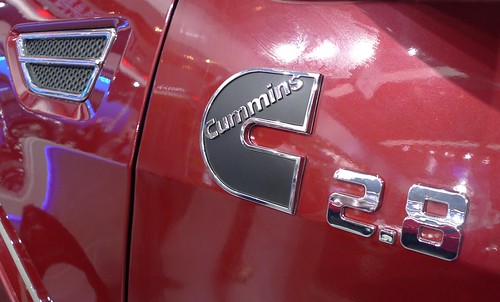
Styling of the Tunland is anodyne, but proportional, unlike, say, the awkward Mahindra that never made it to our shores. The interior is likewise unremarkable but functional.
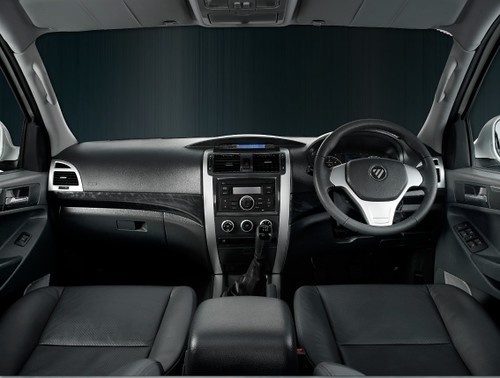
The Tunland will be equipped with SRS driver and passenger airbags and ABS brakes, as well as other potentially North-American-friendly features such as iPod integration, Bluetooth connectivity, and options such as leather upholstery. Given all that, the tapping of American engineers, plus the fact that the Cummins engine can be specced for Euro 5 emissions standards, could Foton be eyeing the U.S. market? Sooner or later we will see Chinese brands here; it would be good news if one of them were a turbodiesel pickup.
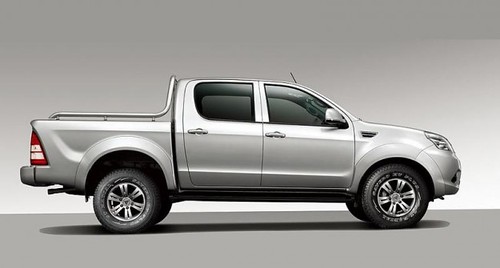
Hint: When using “Search,” if nothing comes up, reload the page, this usually works. Also, our “Comment” button is on strike thanks to Squarespace, which is proving to be difficult to use! Please email me with comments!
Overland Tech & Travel brings you in-depth overland equipment tests, reviews, news, travel tips, & stories from the best overlanding experts on the planet. Follow or subscribe (below) to keep up to date.
Have a question for Jonathan? Send him an email [click here].
SUBSCRIBE
CLICK HERE to subscribe to Jonathan’s email list; we send once or twice a month, usually Sunday morning for your weekend reading pleasure.
Overland Tech and Travel is curated by Jonathan Hanson, co-founder and former co-owner of the Overland Expo. Jonathan segued from a misspent youth almost directly into a misspent adulthood, cleverly sidestepping any chance of a normal career track or a secure retirement by becoming a freelance writer, working for Outside, National Geographic Adventure, and nearly two dozen other publications. He co-founded Overland Journal in 2007 and was its executive editor until 2011, when he left and sold his shares in the company. His travels encompass explorations on land and sea on six continents, by foot, bicycle, sea kayak, motorcycle, and four-wheel-drive vehicle. He has published a dozen books, several with his wife, Roseann Hanson, gaining several obscure non-cash awards along the way, and is the co-author of the fourth edition of Tom Sheppard's overlanding bible, the Vehicle-dependent Expedition Guide.



